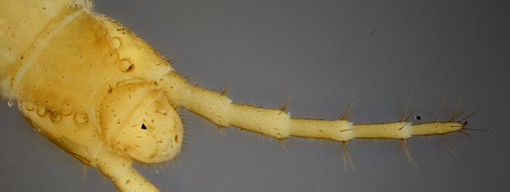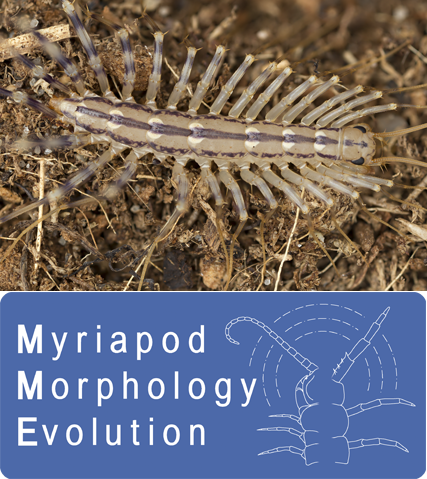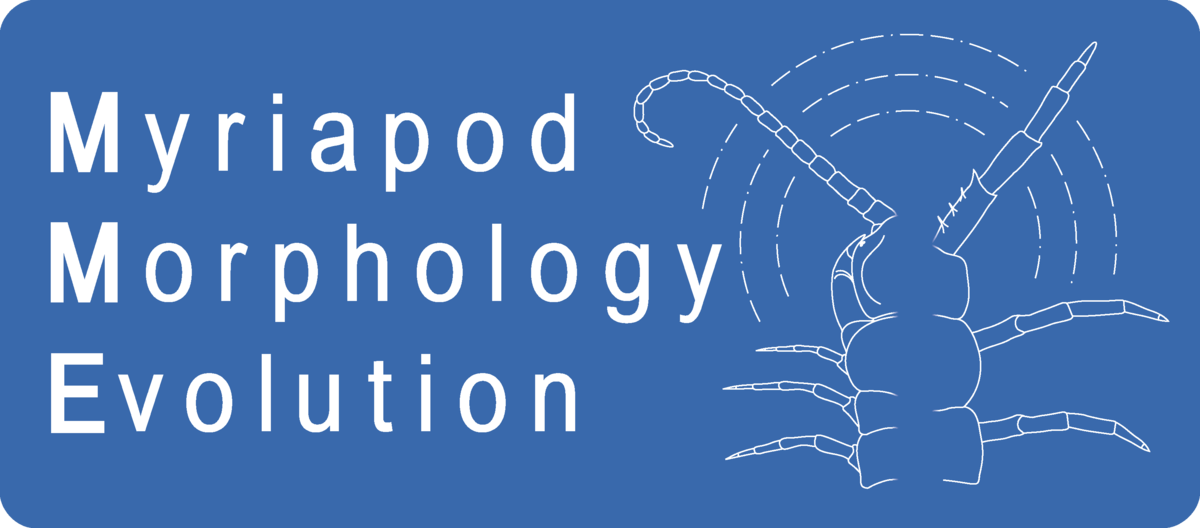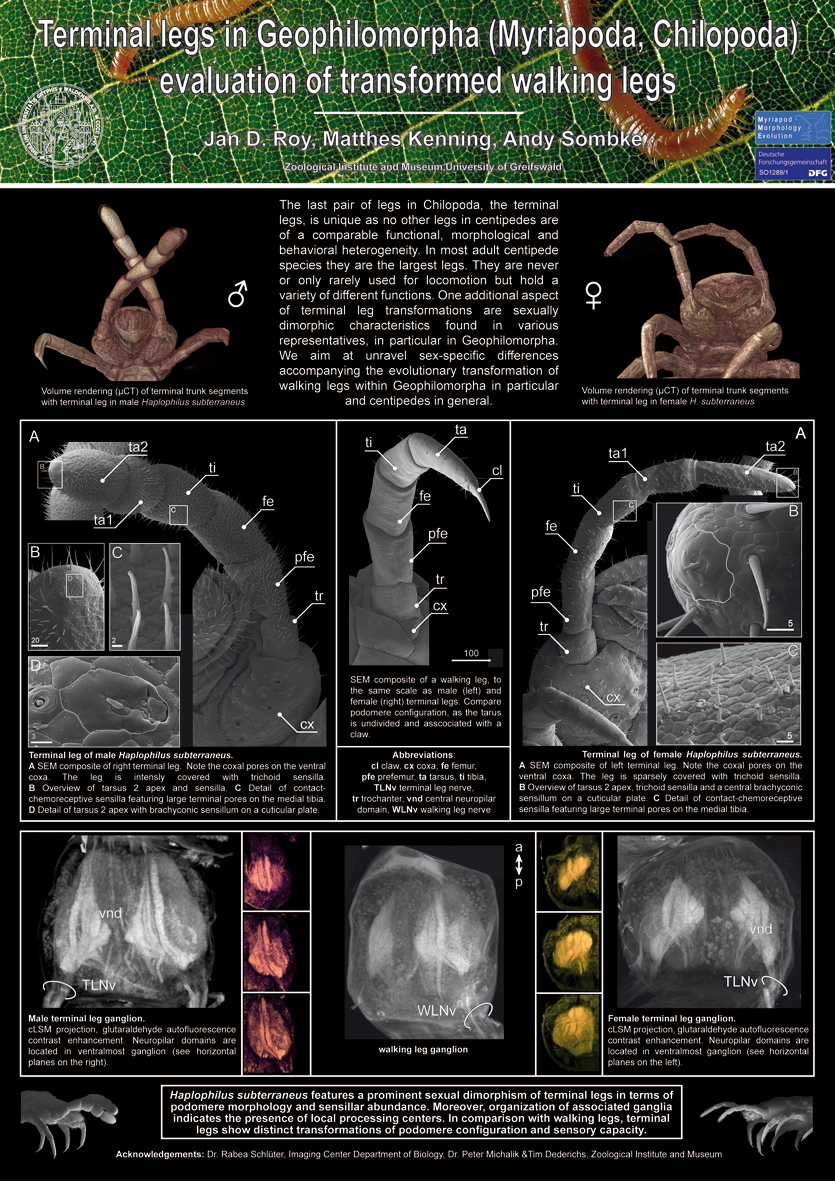The ultimate legs of Geophilomorpha
The last pair of legs in Chilopoda, the ultimate or terminal legs, are particularly unique as no other leg in centipedes is of a comparable functional, morphological and behavioral heterogeneity. In most adult centipede species they are the largest legs, easily noticeable by their shape and by the way they are hold as well as moved in relation to regular walking legs. They are never or only rarely used for locomotion but hold a variety of different functions. One particular aspect of ultimate leg transformations are sexually dimorphic characteristics found in various representatives of centipedes, in particular in Geophilomorpha. For instance, only males of the several genera possess prominently thickened and hirsute ultimate legs featuring an intensive coverage with trichomes and sensilla at the ventral side of several podomeres. Although available experimental evidence is as yet circumstantial, terminal legs of Geophilomorpha play a role in at least certain aspects of courtship behavior, indicating the presence of mating associated sensory organs. In a broad methodological approach, histology, immunohistochemistry, scanning electron microscopy as well as microCT analysis were applied in order to explore characteristics of sexual dimorphic ultimate legs in terms of leg morphology, diversity of sensory organs, and organization of associated processing centers in the nervous system in comparison with walking legs. To that end, we aim at unraveling sex-specific differences accompanying the evolutionary transformation of trunk appendages within Geophilomorpha in particular and centipedes in general.

Conference contributions
Greifswald Myriapod Group
- Matthes Kenning | nervous system, sensory organs, terminal legs
- Carlos A. Martínez-Muñoz | taxonomy and biogeography of Scolopendromorpha
- Carsten H.G. Müller | glandular systems, sensory organs, general morphology
- Jan D. Roy | nervous system, terminal legs
- Vanessa Schendel (alumna) | nervous system of Lithobiomorpha
- Andy Sombke | nervous system, sensory organs, general morphology



